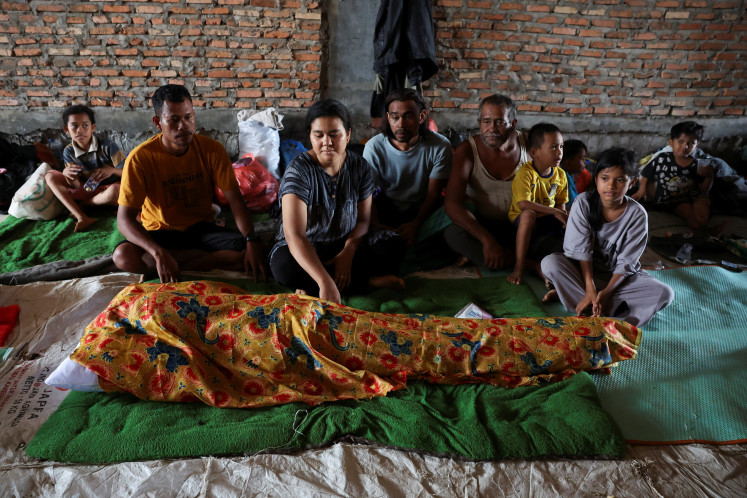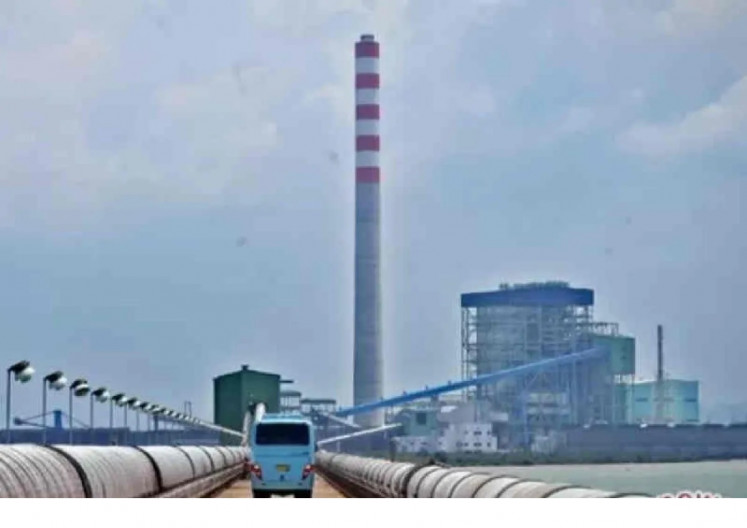Popular Reads
Top Results
Can't find what you're looking for?
View all search resultsPopular Reads
Top Results
Can't find what you're looking for?
View all search resultsInfrastructure boost seen as key to revive manufacturing sector
Amid the continued deindustrialization of Indonesia, the government has been urged to speed up infrastructure development to prevent further weakening of the manufacturing sector
Change text size
Gift Premium Articles
to Anyone
A
mid the continued deindustrialization of Indonesia, the government has been urged to speed up infrastructure development to prevent further weakening of the manufacturing sector.
Once the backbone of the country’s economy, the manufacturing sector has struggled to maintain growth and contribute to the gross domestic product (GDP). It grew by only 4.29 percent last year, lower than the economic growth that expanded by 5.02 percent, while its share in the GDP was 20.51 percent, according to data from the Industry Ministry.
Reliance on raw commodities during the commodity boom from 2003 to 2011 has led to complacency, with the government putting in little effort to develop the much-needed infrastructure that supports the manufacturing industry, such as roads, ports and power plants.
“Development of infrastructure has been left behind in the past decade. That’s why the deindustrialization has occurred persistently,” said University of Indonesia economist Fithra Faisal Hastiadi recently.
Road length increased by only 35 percent from 2000 to 2014 under the administration of former president Susilo Bambang Yudhoyono, according to World Bank data.
As many as 166 power plant projects were lagged in the same period, Supreme Audit Agency (BPK) data shows.
The current administration has planned a wide range of infrastructure projects, including 2,650 new roads, 1,000 toll roads, 24 seaports, 15 airports, 3,258-kilometer railways in Java, Sumatra, Kalimantan and Sulawesi and 35,000-megawatt (MW) power plants, to better connect the sprawling archipelago and overcome infrastructure bottlenecks.
Fithra said despite such massive strides in development, there had been no evaluation over the executed infrastructure projects so far to measure if they bore fruits.
However, Indonesia’s rank in the World Bank’s Logistics Performance Index (LPI) fell to 63rd place in 2016, from 53rd place in 2014.
The lack of road access to industrial estates, ports and airports, as well as low-quality provisions or an insufficient supply of electricity, gas and telecommunications were typical for industry players, making them unsurprised by the weak manufacturing growth.
“We can attract more investment only with sufficient infrastructure and utilities because investors will benefit from low production costs,” said Industrial Estates Association (HKI) chairman Sanny Iskandar.
The manufacturing industry in Southeast Asia’s largest economy has seen its manufacturing industry surge at a single digit rate for more than a decade, a reversal to the period before the 1997-1998 financial crisis, when the sector used to outpace the economic growth.
At the same time, its contribution to the GDP has also been shrinking, prompting economists to describe it as “deindustrialization.”
The government acknowledged the crucial role of infrastructure in reviving the manufacturing sector, but noted that building facilities and utilities took time and therefore, the impact would be seen in the middle to long term.
“Infrastructure cannot be used until it’s done. We have various projects but not all are done. Greater Jakarta, for example, needs Patimban, but it will only be realized two to three years from now,” Industry Minister Airlangga Hartarto said.
Apart from infrastructure projects that are being constructed, the government has been trying to lure investors with 13 policy packages that cuts lengthy investment procedures, opens up more sectors for foreign investment and offers tax allowance and incentives for various industries, including manufacturing.
It also recently cut prices of gas from US$9 per million British thermal units (mmbtu) to $6 per mmbtu in three industrial sectors, namely steel, petrochemicals and fertilizers, and will expand the reduction to another seven sectors.
The Industry Ministry is also proposing to the government alternatives to fund industrial firms in a bid to provide low-interest loans.










